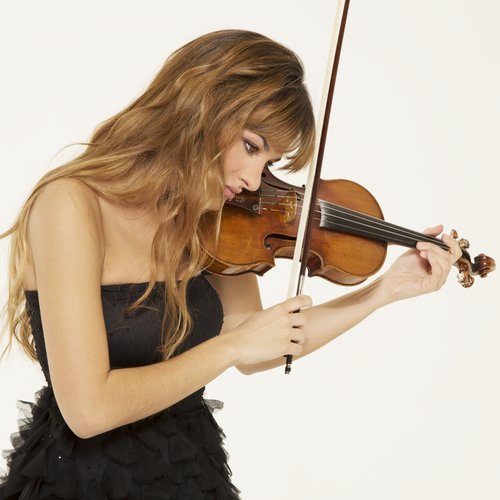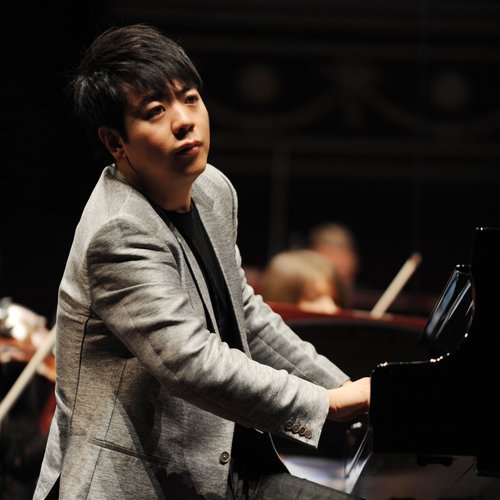Mitsuko Uchida Discusses Mozart
In a musical world studded with fine Mozartians, no one is rated more highly than Mitsuko Uchida. Born in a seaside town near Tokyo, she was 12 when her diplomat father was posted to Vienna. There, she studied at the city’s Hochschule für Musik, thriving on what she later came to see as the fruitful tension between traditional Viennese teaching and her own independent-mindedness.
In her early twenties she settled in London and made a name for herself with a complete cycle of Mozart’s solo piano sonatas at the Wigmore Hall, soon following these up with performances of his piano concertos. These remain central to a sizeable repertory that ranges from Beethoven and Schubert to Debussy and Schoenberg.
When faced with the question of whether Mozart’s uniquely individual balance of naturalness and finesse works best on period instruments or on their sophisticated modern counterparts, the finest exponents of his music seem to handle the problem as if it doesn’t exist – witness Uchida’s blend of serenity and verve, poise and incisiveness, adventure and simplicity. She sees the broader questions in the same way.
‘If you keep the balance right,’ she says, ‘nothing is better than a musician’s life.’
What then, for her, are the key issues of Mozartian style? Here, Mitsuko Uchida reveals all…
Do you have a favourite Mozart concerto?
It’s not possible to say this, absolutely not! But I do feel that something remarkable happened to his music between the B flat Concerto, K456 (No.18), which is so lovely, and the D minor Concerto, K466 (No.20). This one, and K467 in C (No.21), the one we now call ‘Elvira Madigan’… everything is suddenly in a different dimension. Mozart has made this astonishing leap. There’s an immensity about this music, and in the great concertos that followed. And then in the last one, K595 in B flat (No.27), his style becomes simpler again. This too is something very special. You’ve often directed Mozart’s piano concertos from the keyboard, as he himself did.
What is it about his music that suits this approach?
I think it’s to do with Mozart’s idea of how the concerto form works. From Beethoven onwards, composers saw the concerto as a kind of contest between the soloist and the orchestra. But with Mozart, they’re very much partners. The music is like an ongoing conversation between the piano and the orchestra. Either one might take a different line on this idea or that one, but the general mood is one of mutual agreement.
So it comes naturally to direct this kind of friendly dialogue from the keyboard, because you start with this sense of togetherness. And you also perform Mozart with a conductor...
Yes, I like to do this too. Of course it’s very important to feel on a wavelength with the conductor about the concerto you’re performing, for the same reason: it’s a dialogue of togetherness. I find I work very well with Charles Mackerras, and Colin Davis too. Colin has really deepened my appreciation of the ‘Coronation’ Concerto in D, K537 (No.26). He thinks it’s an underrated masterpiece. Increasingly I think he’s right. Some of the concertos are still neglected in this way – such as K450 in B flat (No.15) or K451 in D (No.16).
Why do you think this is so? It can’t be the musical quality as such…
No! They’re wonderful. Are they very difficult technically? I wouldn’t say so. K451 sounds harder than it actually is: there are a lot of notes but they lie beautifully under the hand. Perhaps these works are… just a bit lighter. And maybe people think this doesn’t come across as well in today’s big concert halls.
You always play Mozart on a modern concert grand, not on a period instrument.
For me this is not too much of an issue for the same reason: the size of our concert halls today. I don’t believe an early piano can make enough sound to fill them. The halls that Mozart played in were a lot smaller. I’ve played his music on a period instrument in that kind of listening space, and it works well. Also I have a square piano, one of the really early kind, in my home in London, and I play it there. But only at home!
We know that Mozart used to improvise his own ornamentation when he performed his concertos. What’s your own approach?
You have to find your own solution. Really search for it. It depends on the actual moment in performance, the relationship with the orchestra – things like that. And there are clues. In his Rondo finale movements, when the repeated section comes along, Mozart sometimes writes in the ornamentation. It’s so beautifully done – decorative, but never too much. And his own written-out solo cadenzas have survived for some of the concertos, but not for others.
In those situations, do you play your own?
Yes, I think you must. There are exceptions, like Beethoven’s cadenza for the K466 Concerto in D minor (No.20): this is so impressive that it would be ridiculous not to use it. In the others, I think it’s like the ornamentation question. A cadenza should develop the music further, but in a style that connects with Mozart’s own. Not something quite different.















